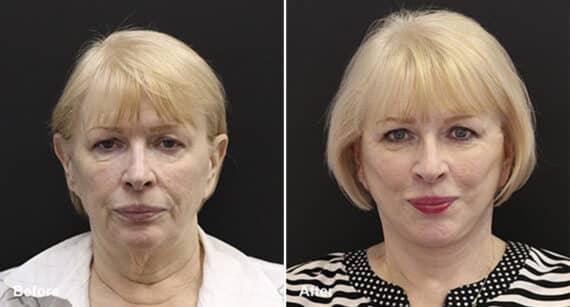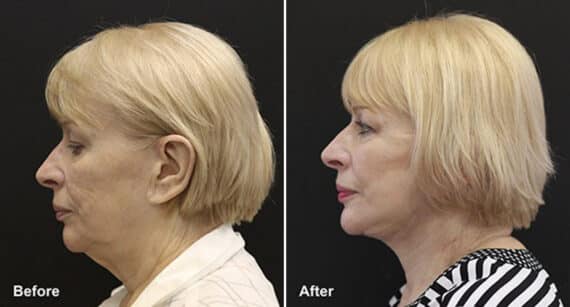Have you noticed changes like facial volume loss, hollow cheeks, wrinkles, or thin lips that make you look older than you feel? A facial fat transfer is a cosmetic surgery option designed to restore youthful contours by using your body’s own fat to refresh your appearance. This safe, natural approach can also enhance areas that have thinned over time.
The procedure doesn’t just target one sign of facial aging — it addresses multiple concerns while delivering long-lasting results. If you’re considering this fat grafting treatment, understanding the recovery period is key to feeling confident about your decision. Let’s explore what you can expect so you’re fully prepared for your journey.

How Long Does Swelling Last After Fat Transfer to the Face?
Swelling after a facial fat transfer is a normal part of the healing process for this cosmetic procedure. Most patients notice swelling begin to subside within the first 4 to 7 days, allowing early signs of their results to show. By the four-week mark, the majority of swelling has resolved, though subtle changes in contour may still occur. Around the three-month point, only minor residual swelling remains, revealing the refined and lasting results of the procedure.
Facial Fat Transfer Recovery Time Day-by-Day
For fat transfer patients, recovery is a gradual journey with important milestones along the way. Each stage brings visible changes in swelling, comfort, and the emergence of your final results. By understanding what typically happens day-by-day, you can prepare both physically and emotionally for the process, ensuring you support optimal healing and long-lasting improvements.
Day 0 (The surgery day)
Immediately after surgery, patients are monitored in a recovery area to ensure they are stable before heading home. Surgeons provide detailed aftercare instructions, emphasizing the importance of rest and keeping the head elevated to reduce swelling. This first day is all about allowing the body to begin healing in a calm, supported environment.
Immediately after surgery
Day 1-3
During the first few days, swelling and bruising are typically at their peak. Some patients experience mild to moderate aching or throbbing, which can be managed with prescribed pain medication and the use of cold compresses. This is a crucial period for rest, hydration, and closely following all post-operative instructions to support the healing process.
During the first few days
Day 4-7
By the end of the first week, swelling and bruising begin to noticeably subside. Many patients can remove any dressings at this stage and resume gentle hygiene, including showering. Cleaning incision sites with hydrogen peroxide followed by the application of antibiotic ointment helps promote healing and reduces infection risk. Light activity can often be resumed as comfort allows.
By the end of the first week
Week 2
Swelling and bruising continue to fade, making the face look and feel more comfortable. Many patients feel ready to return to light activities or non-strenuous work at this stage. Careful adherence to aftercare instructions remains important, as the transplanted fat is still settling. Avoiding pressure on treated areas helps protect and preserve the developing results.
Swelling and bruising continue to fade
Weeks 3-4
At this stage, most patients can resume normal daily activities, including moderate exercise, without discomfort. The majority of swelling has resolved, though some mild residual puffiness may remain. Facial contours become more defined as the transplanted fat integrates, giving a clearer preview of the final outcome. Consistent aftercare still plays a role in ensuring the best long-term results.
Resume normal daily activities
1-3 Months
During this phase, residual swelling continues to diminish, and the transplanted fat stabilizes in its new position. The skin’s texture and facial contours become smoother and more refined as healing progresses. By the end of three months, most patients have a clear view of their results, although subtle improvements can continue as tissues fully adapt.
Residual swelling continues to diminish
6 Months
By six months, the transplanted fat has reached its final volume, and results are fully settled. The new facial contours look natural and harmonious, with improvements that can last for many years when maintained with a healthy lifestyle. Patients typically enjoy restored volume, smoother skin, and a rejuvenated appearance that enhances their overall facial balance.
Results are fully settled
Struggling with recovery after facial fat grafting?
Experience world-class treatment from our top-rated providers at Becker Plastic Surgery.
What to Keep in Mind After Your Facial Fat Transfer Procedure
Recovering from a facial fat transfer isn’t just about waiting for swelling to subside — it’s about supporting your results every step of the way. Following the right aftercare measures can make a big difference in the success of your procedure. Here are the key dos and don’ts to help protect your investment and ensure a smooth, comfortable recovery.
What to do after facial fat grafting
A smooth and successful recovery starts with taking proactive steps to care for your face and overall health. By following your surgeon’s instructions and making small adjustments to your daily routine, you can help the transplanted fat survive and thrive for long-lasting results.
- Keep your head elevated: Sleep on your back with extra pillows or in a recliner to minimize swelling.
- Follow cleaning instructions: Use only the recommended solutions, such as hydrogen peroxide, followed by antibiotic ointment.
- Stay hydrated and eat nutritiously: Proper nutrition supports tissue healing and overall recovery.
- Use cold compresses: Apply gently to reduce swelling during the first few days.
- Take medications as prescribed: Pain relievers and antibiotics should be used exactly as directed.
- Rest adequately: Give your body time to heal by avoiding unnecessary exertion.
What to avoid after fat transfer surgery
Avoiding certain activities and habits is just as important as following aftercare instructions. Steering clear of these can help protect the delicate fat cells and ensure they establish properly:
- Do not touch or press on treated areas: Pressure can disrupt fat cell integration and affect results.
- Avoid strenuous exercise or heavy lifting: This can increase swelling and slow healing during the early stages.
- Stay out of direct sunlight: UV exposure can darken scars and affect skin healing.
- Don’t smoke or use nicotine products: Nicotine restricts blood flow, which is crucial for fat cell survival.
- Avoid excessive facial movements: Overuse of facial muscles in the early phase may impact fat placement.
- Refrain from applying unapproved skincare products: Only use products cleared by your surgeon to avoid irritation.
Facial Fat Transfer Results


* All patients are unique and individual results may vary.
Schedule a Consultation with a Facial Plastic Surgeon
Choosing an experienced surgeon for your facial fat transfer ensures your safety and optimizes your outcome. A skilled professional understands how to balance artistry with precision, delivering natural-looking results while minimizing the risk of complications. This is especially important for procedures that require careful sculpting to achieve lasting rejuvenation.
At Becker Plastic Surgery, our team of board-certified cosmetic surgeons specializes in facial plastic surgery and has decades of combined experience in advanced fat grafting techniques. We are known for personalized care, meticulous technique, and results that enhance your unique features. Ready to begin your transformation? Visit our contact page to schedule a consultation or see our locations page for the phone number in your city.